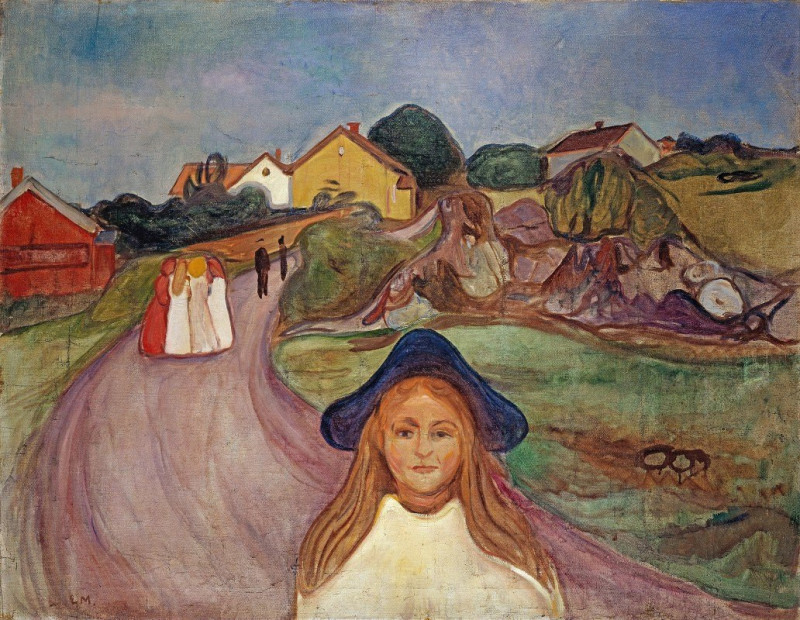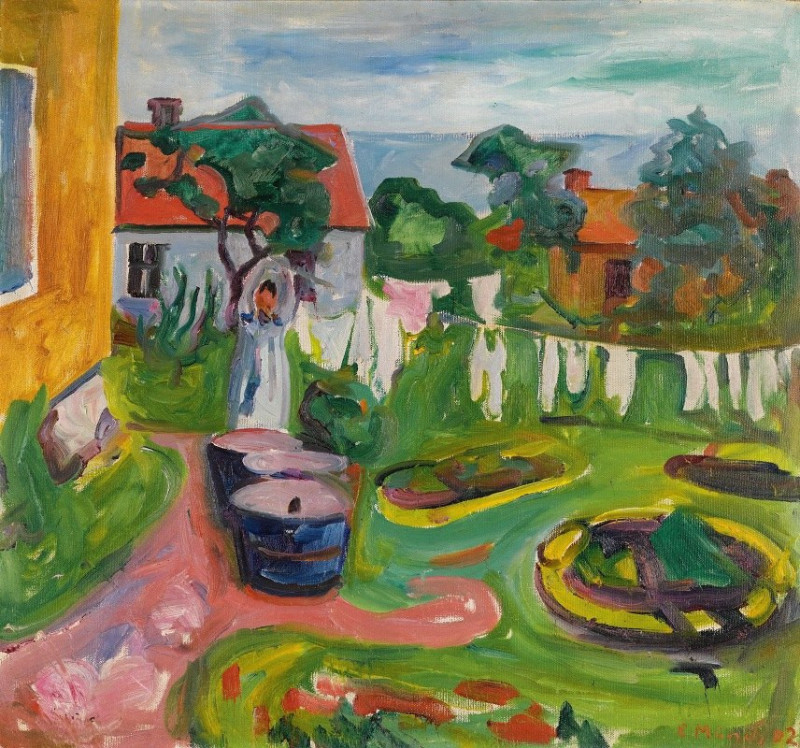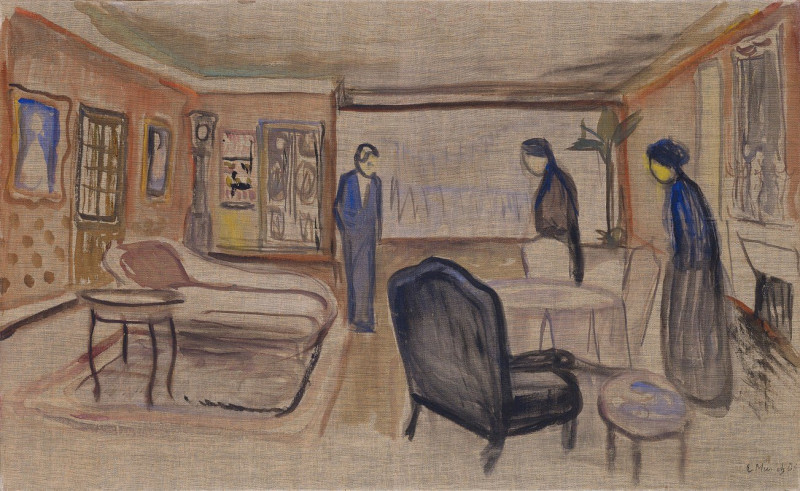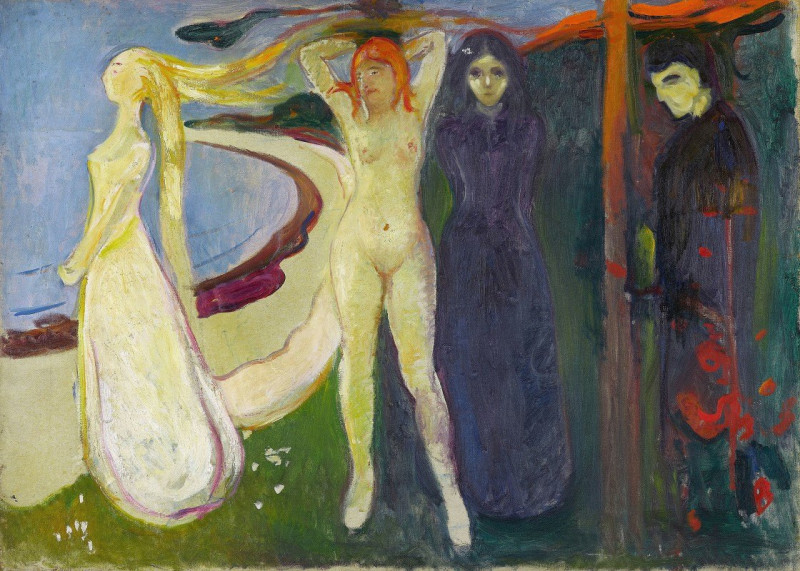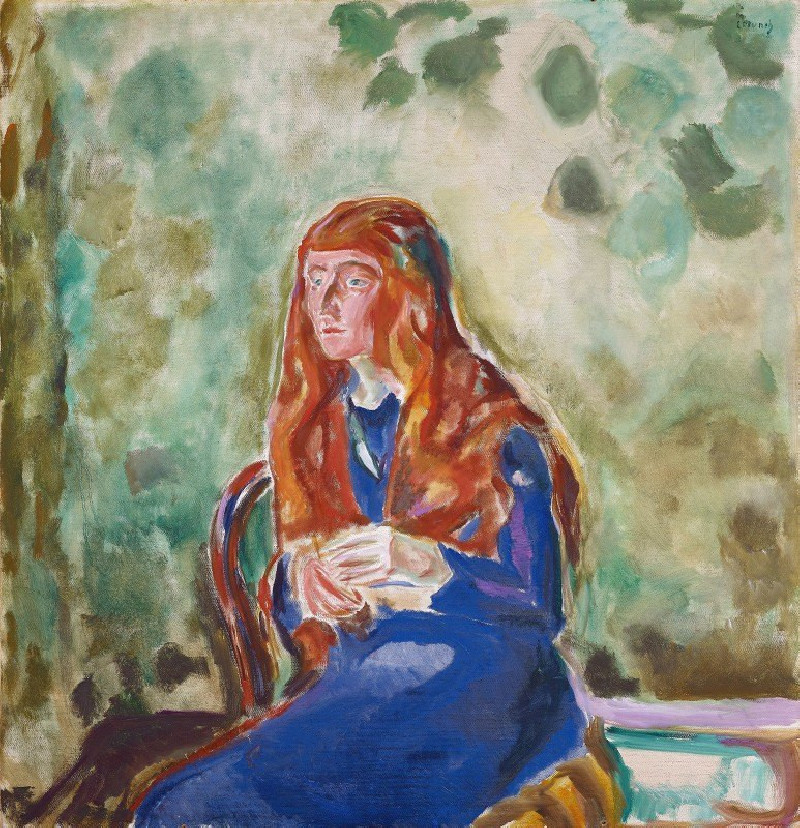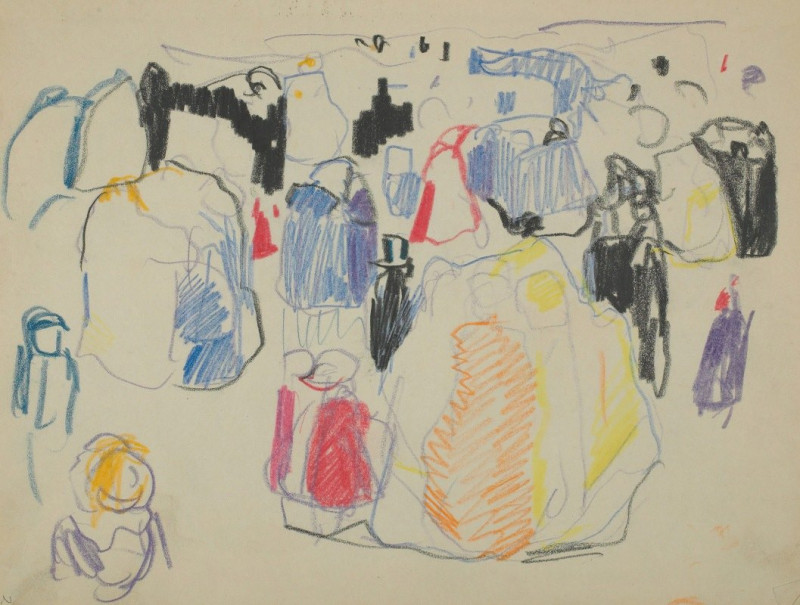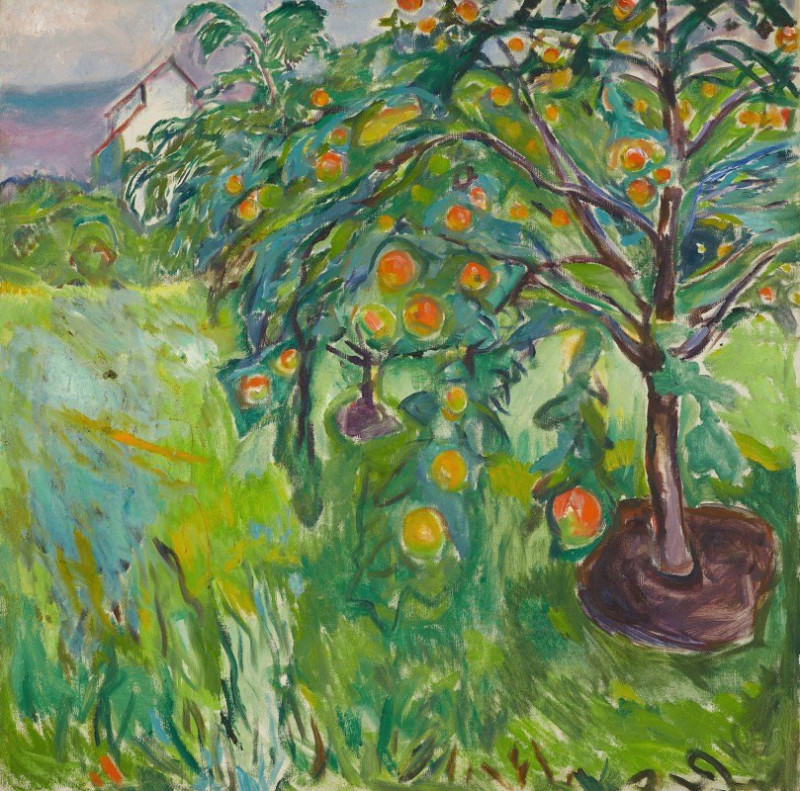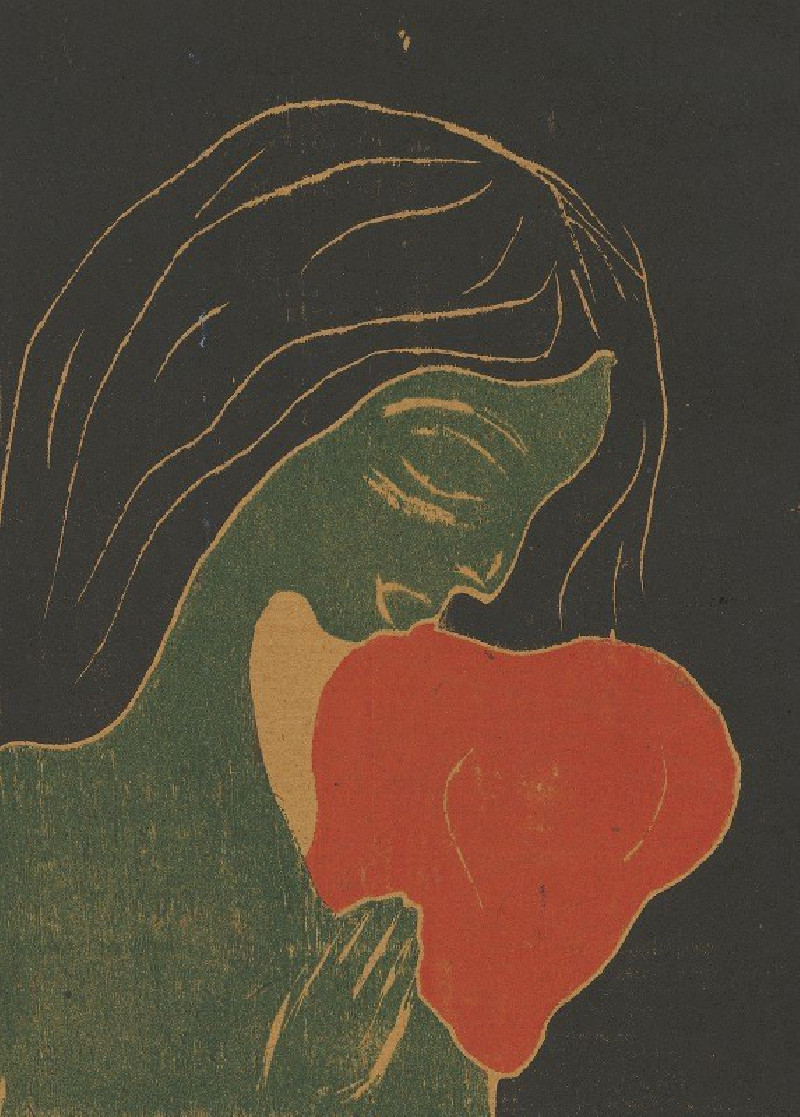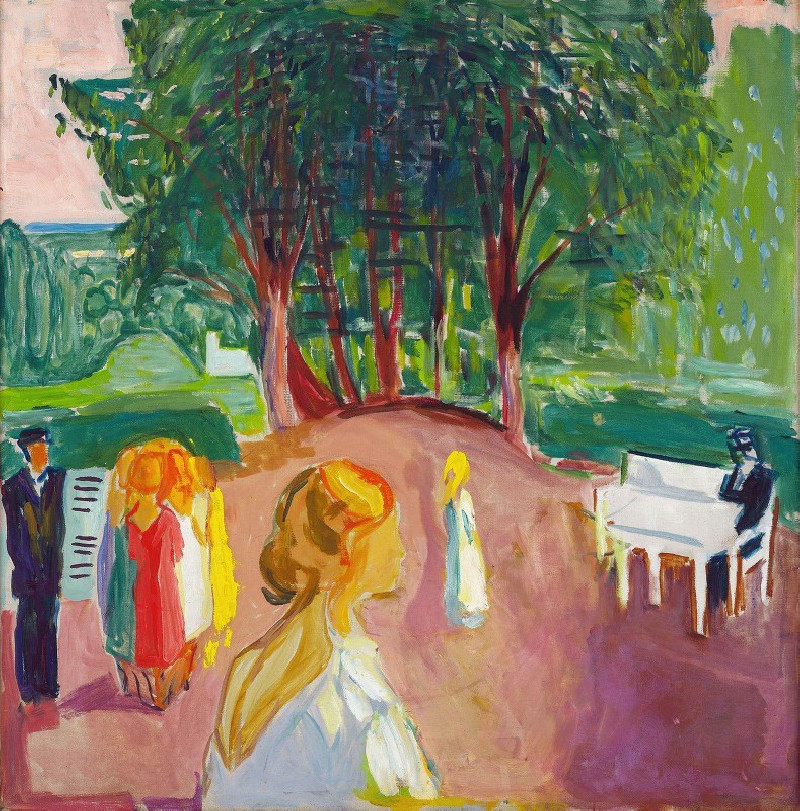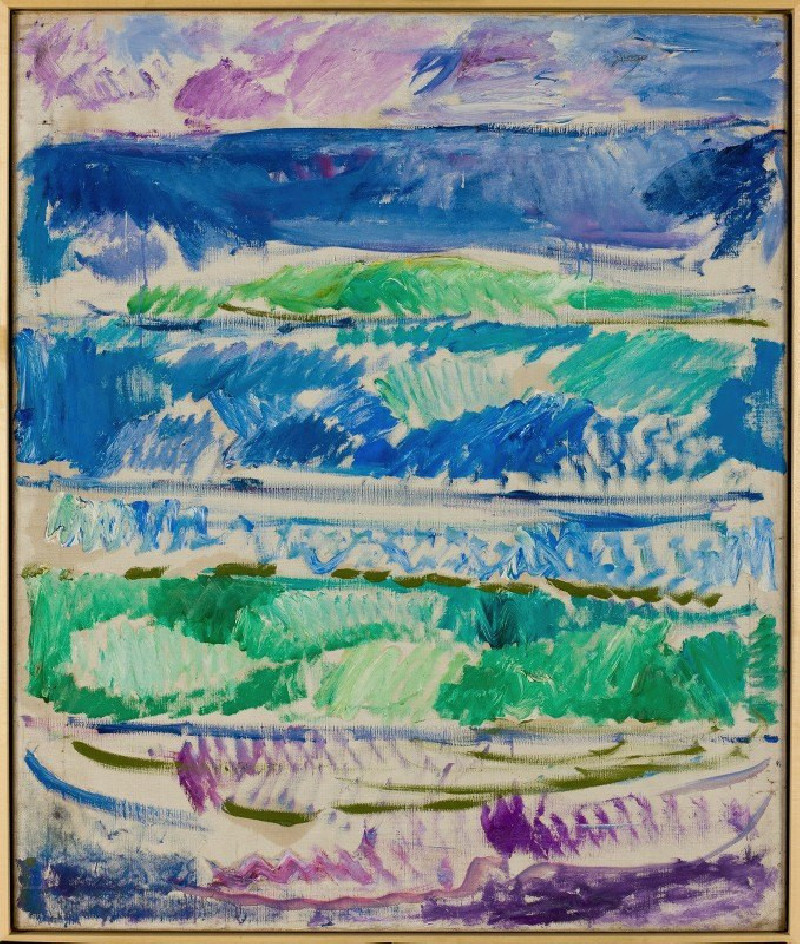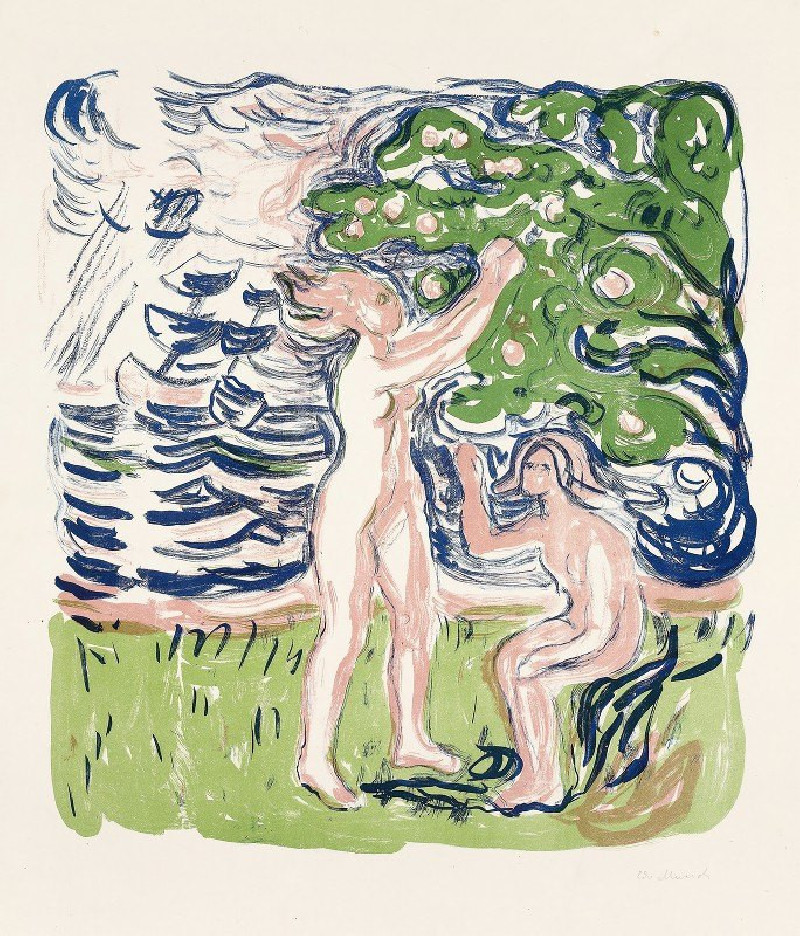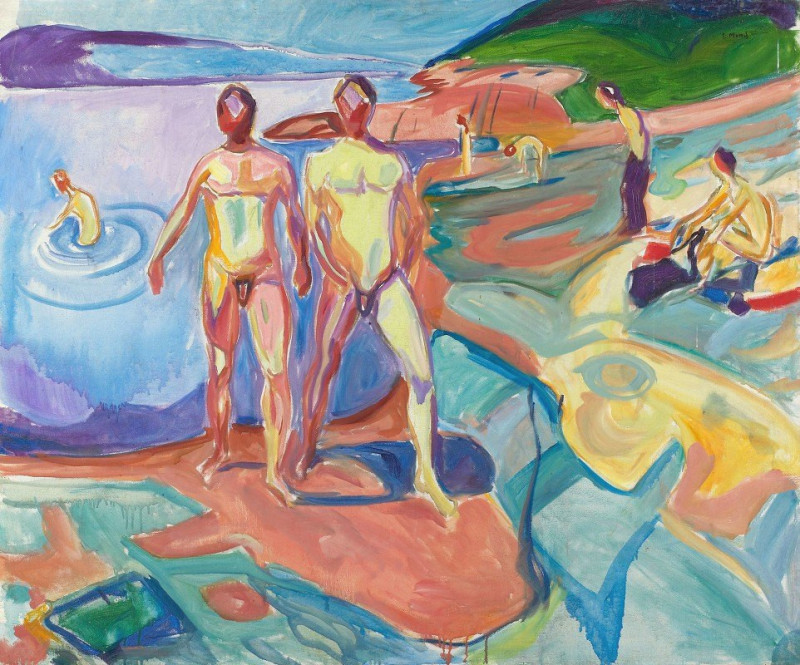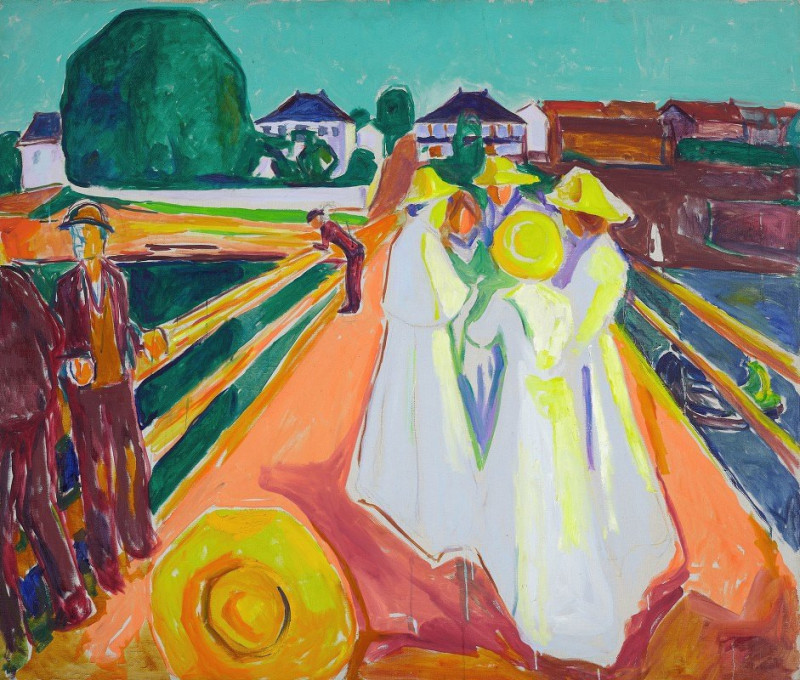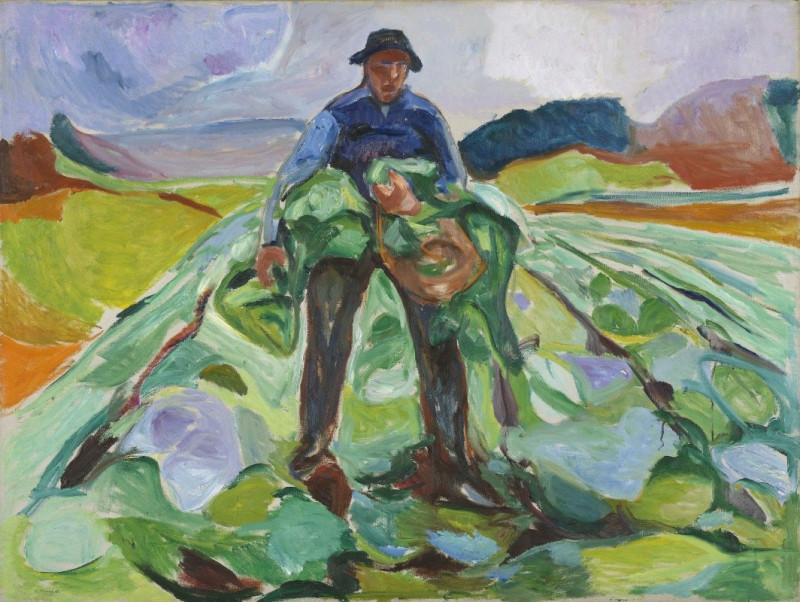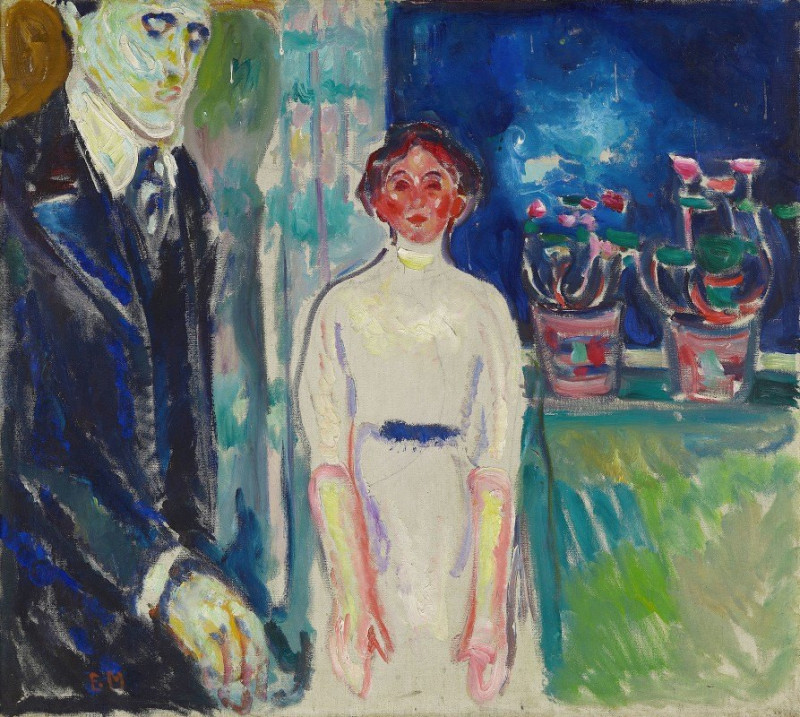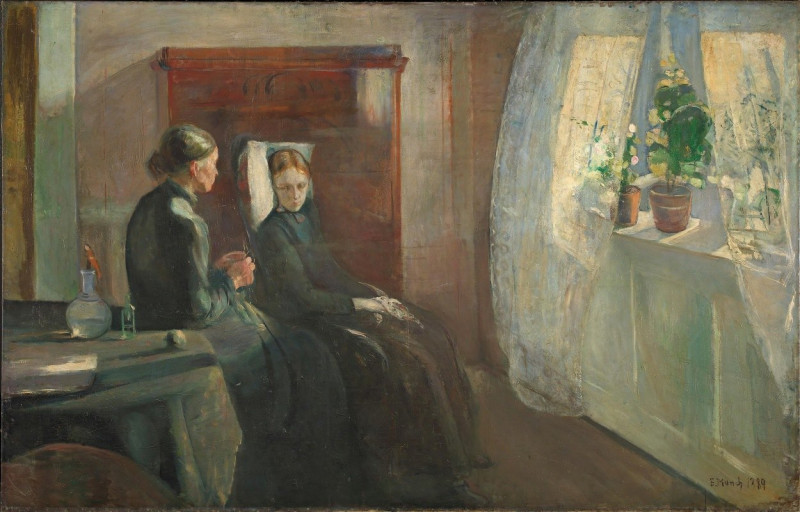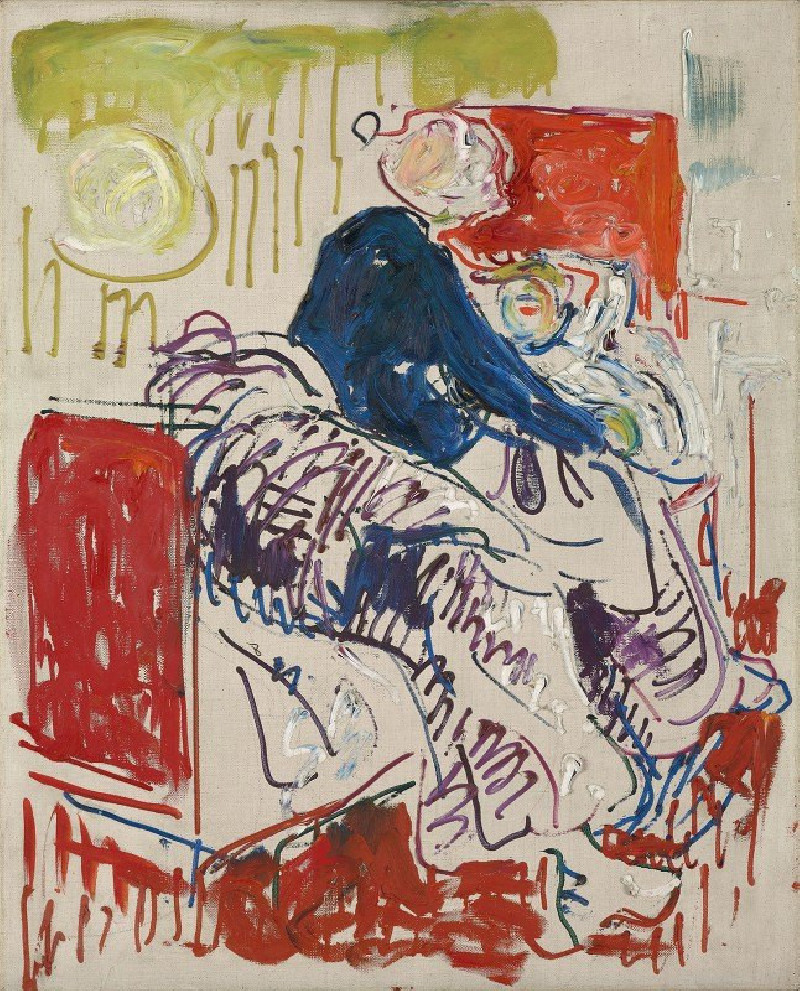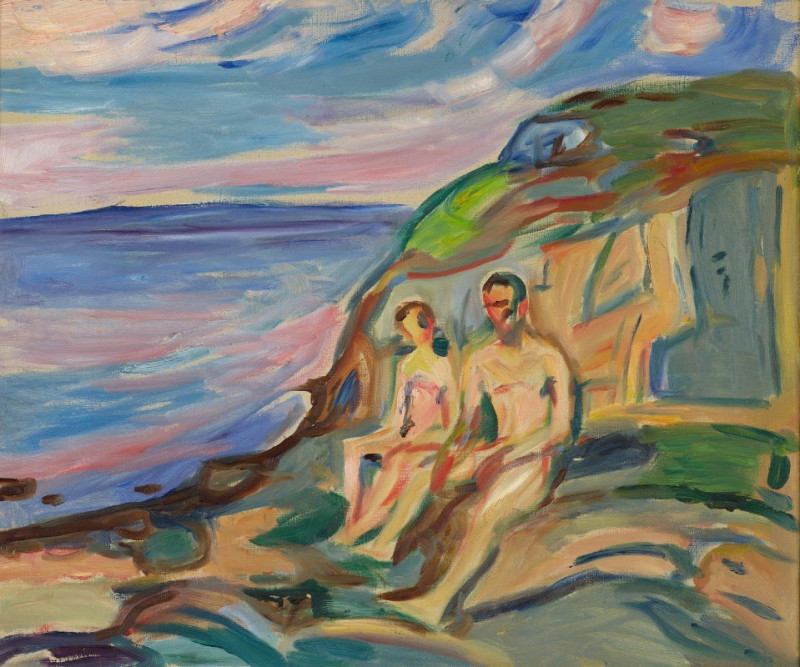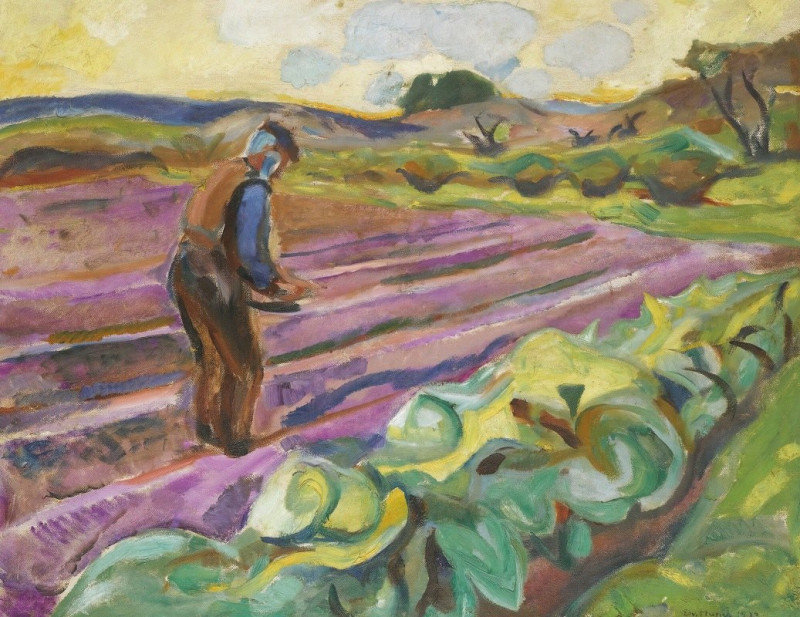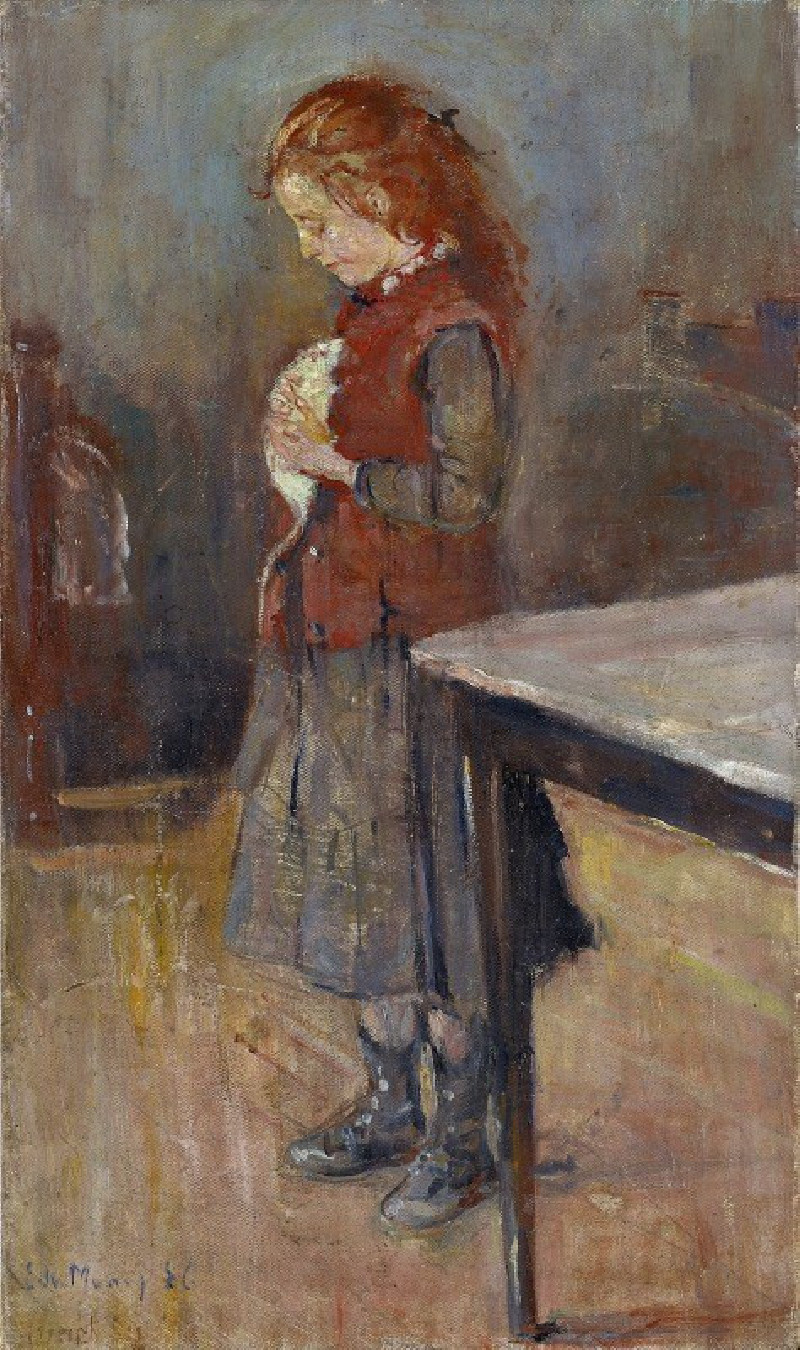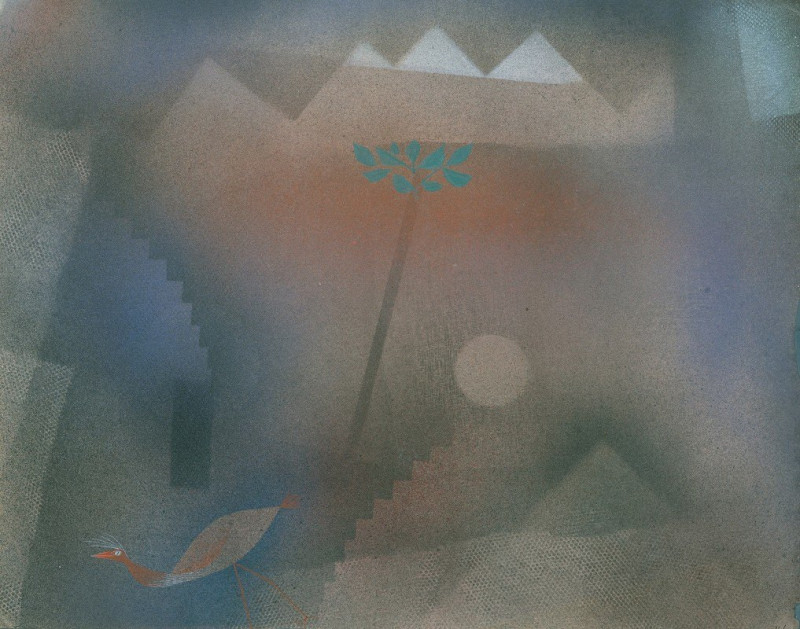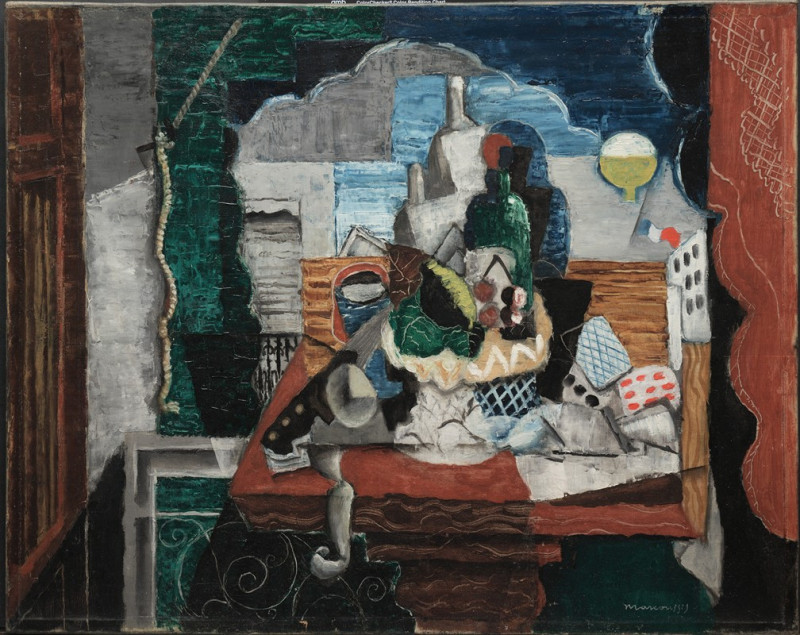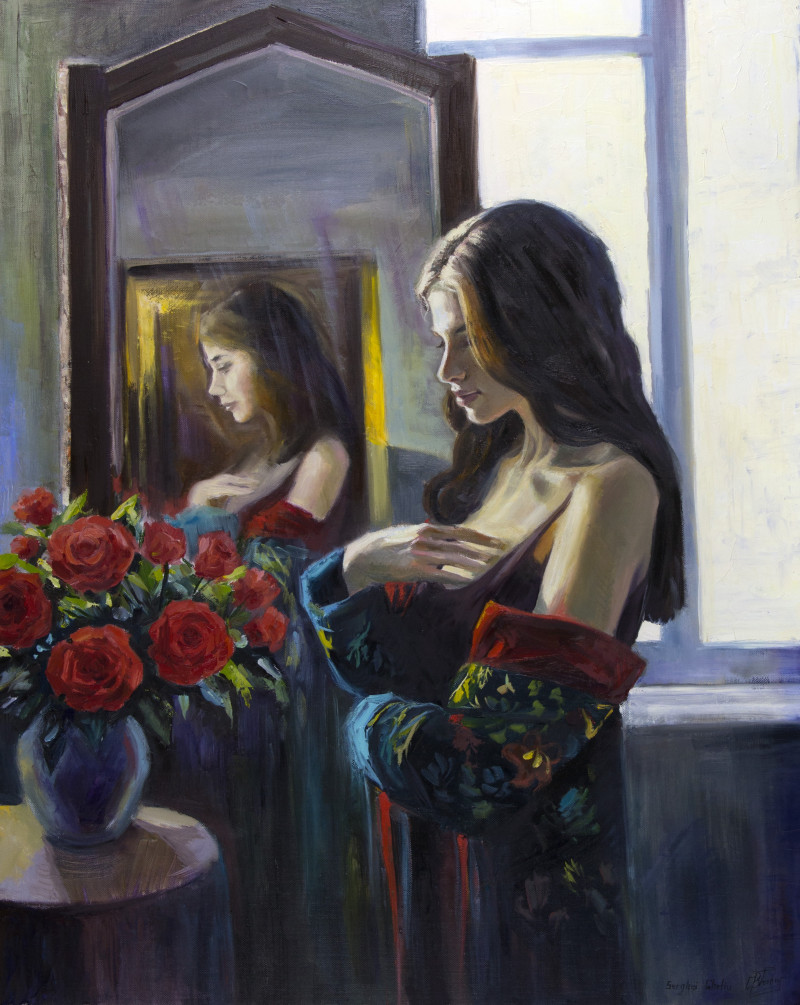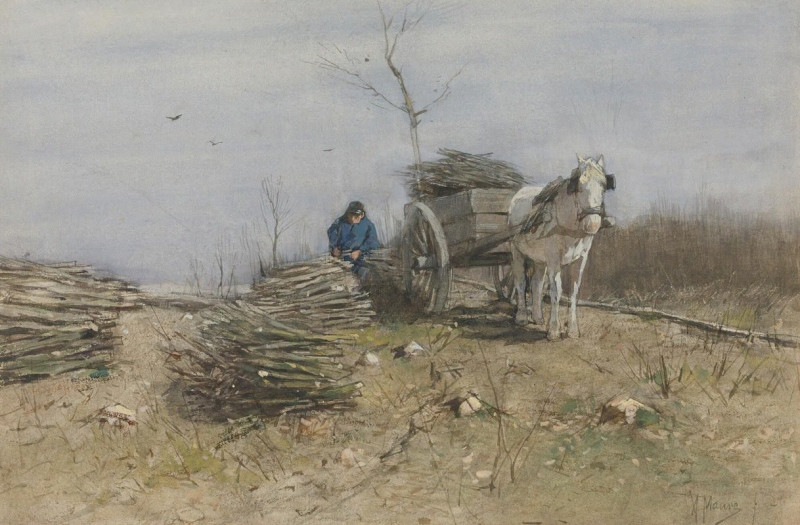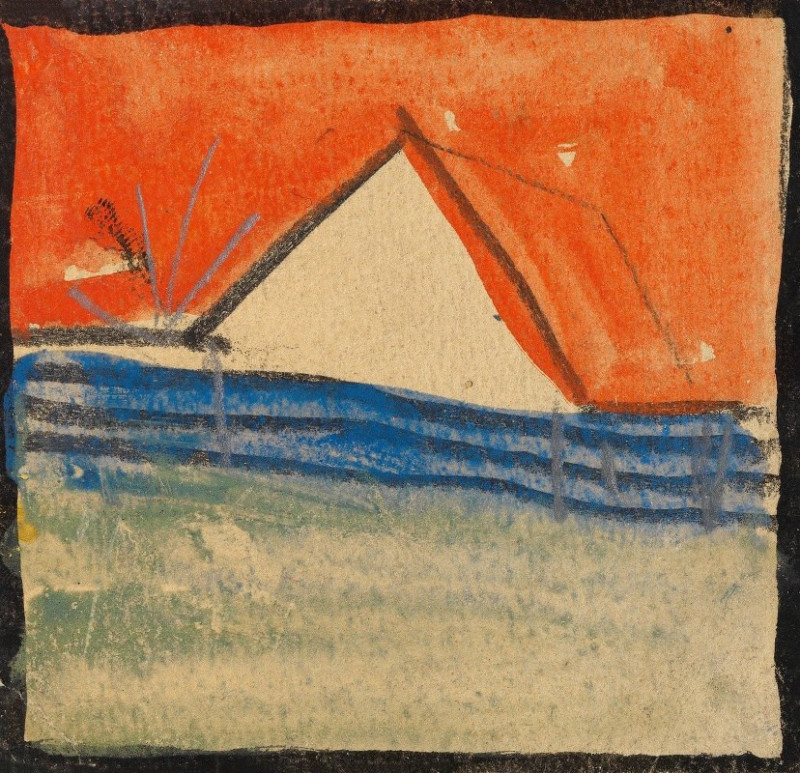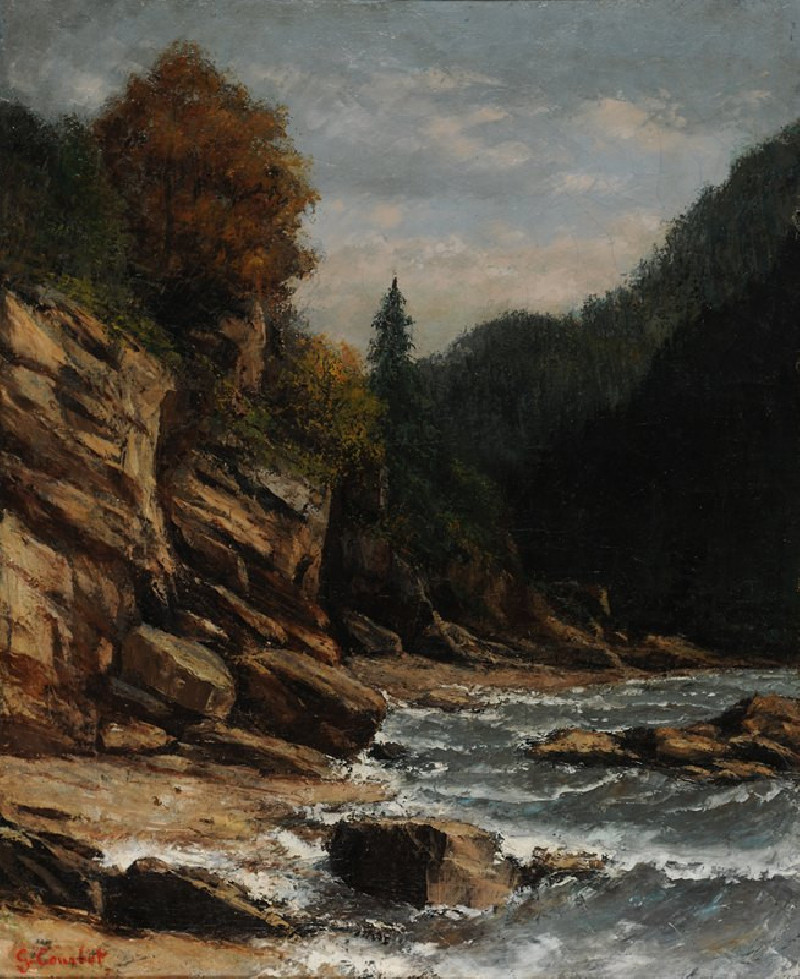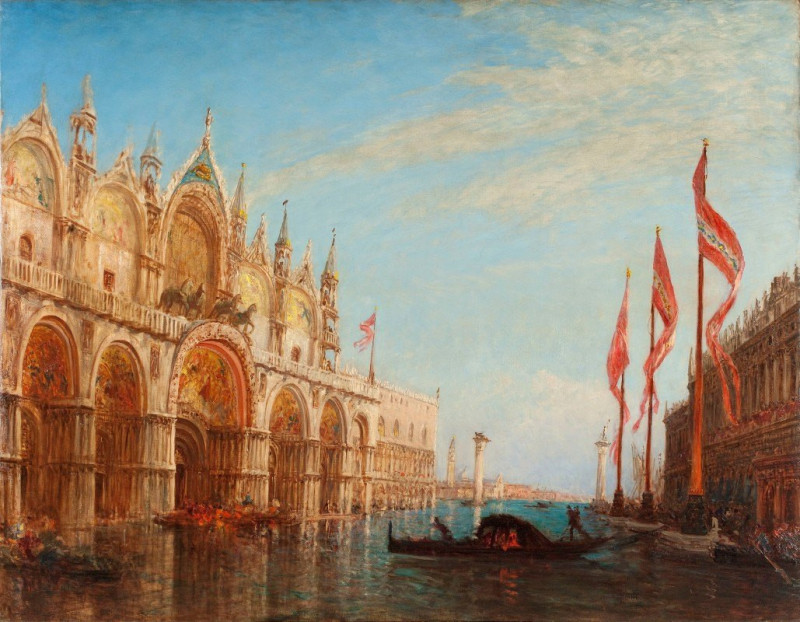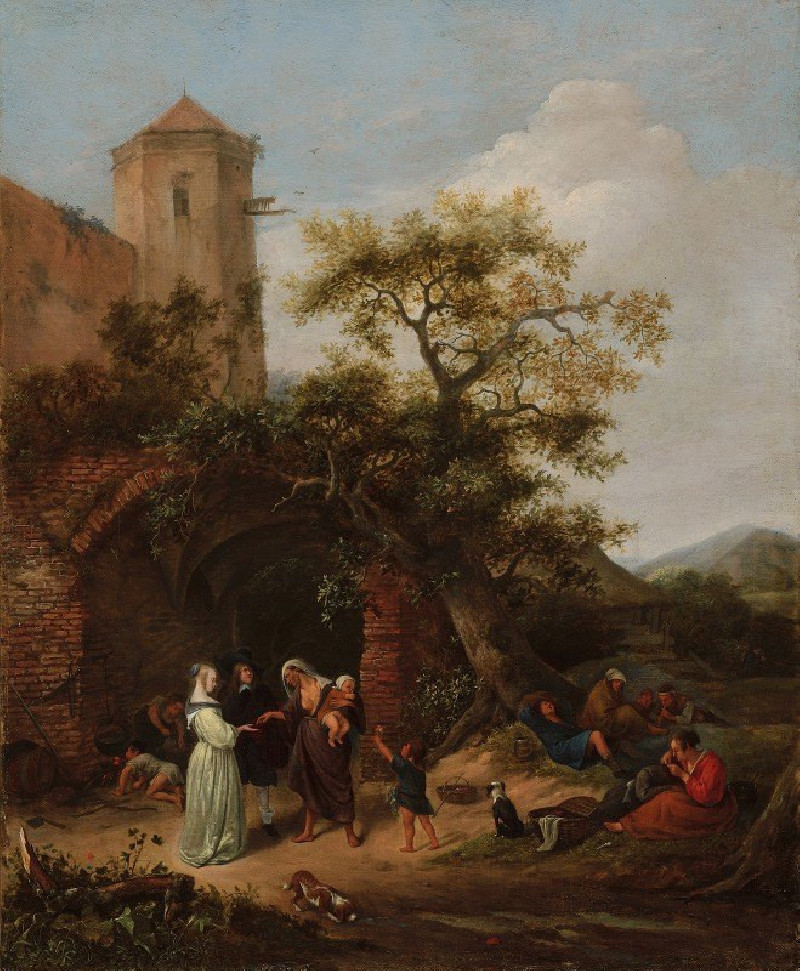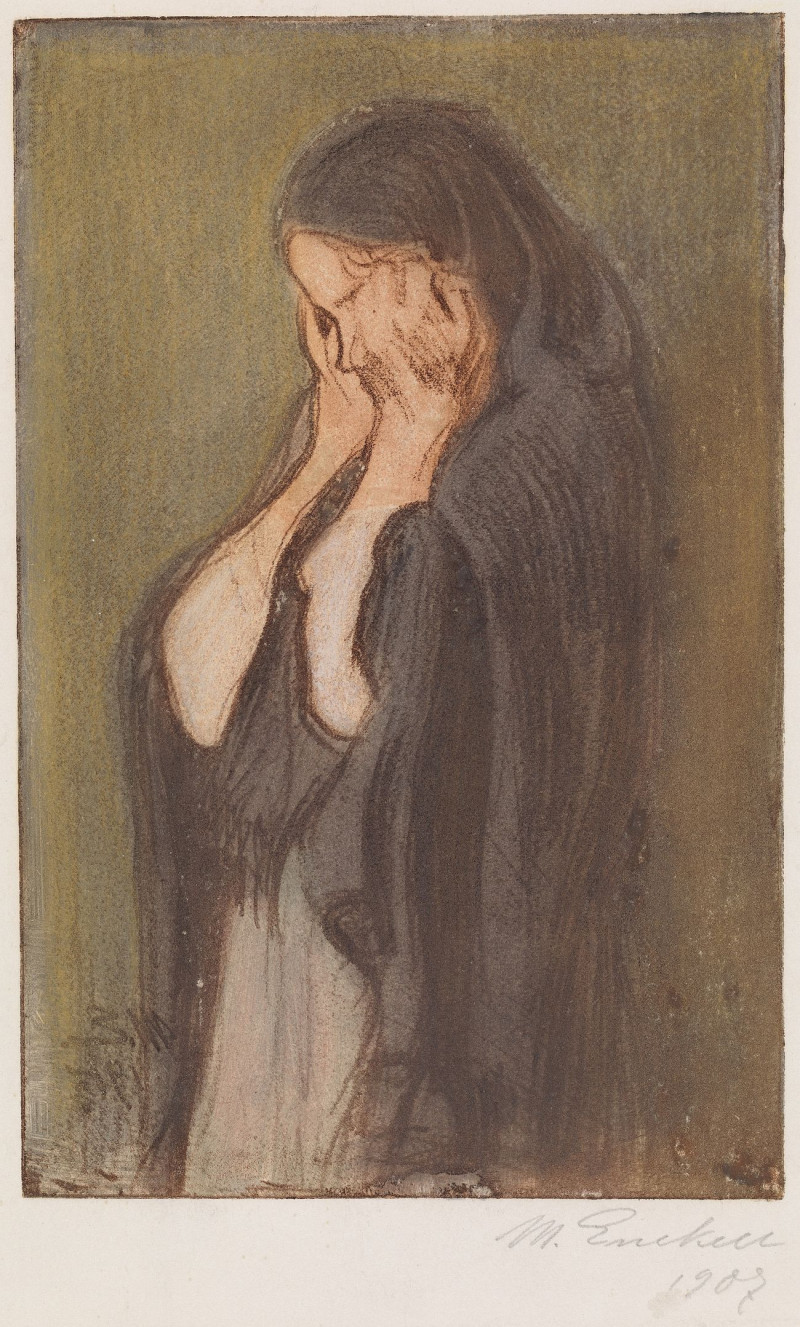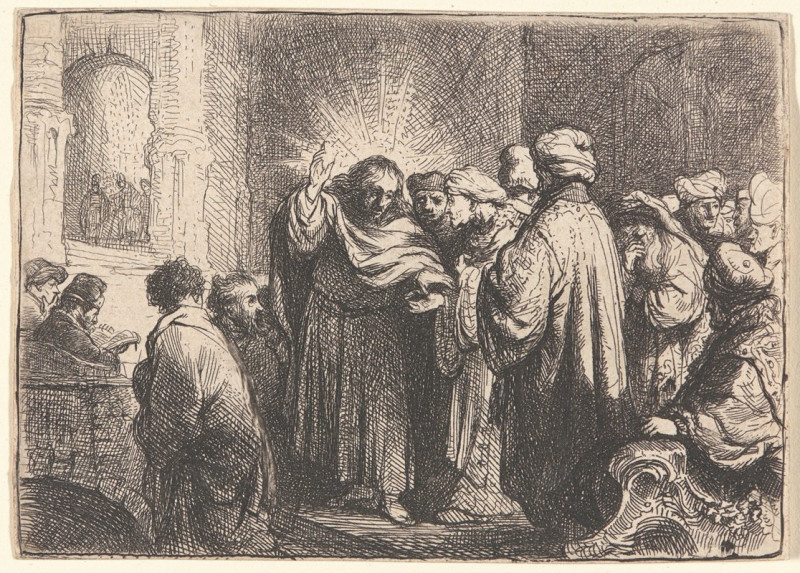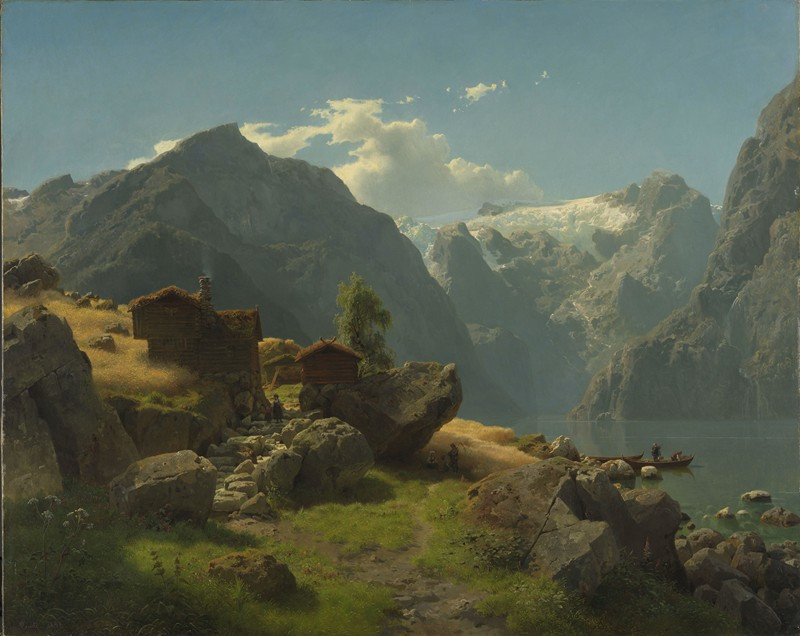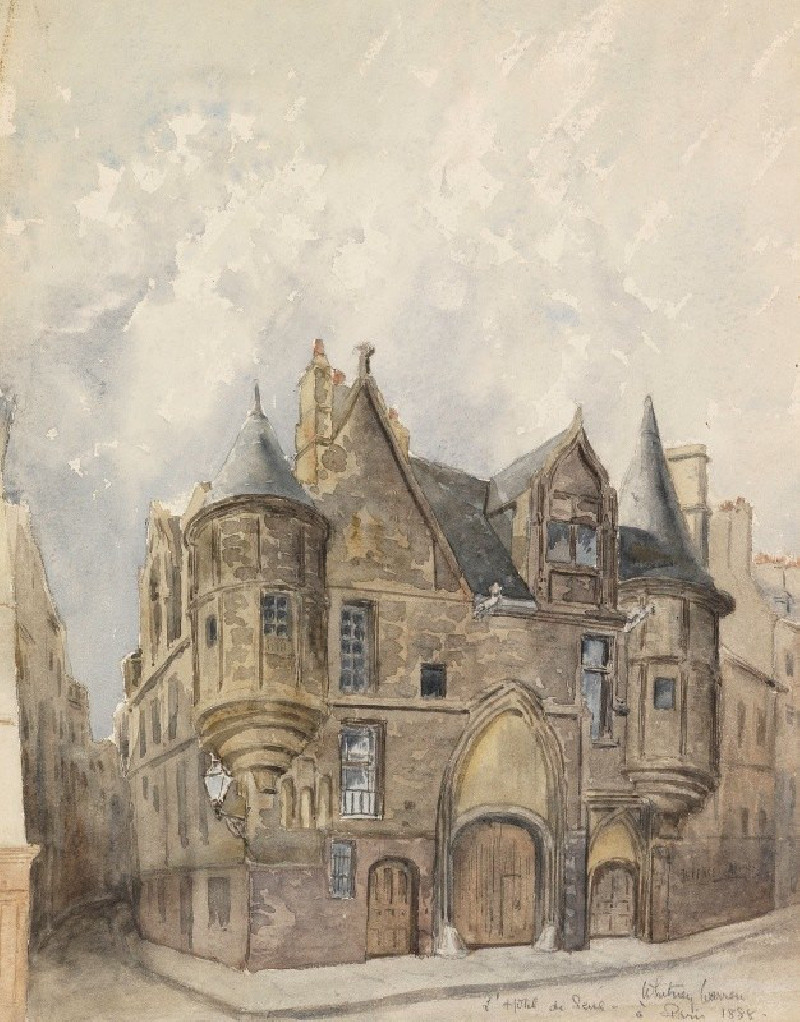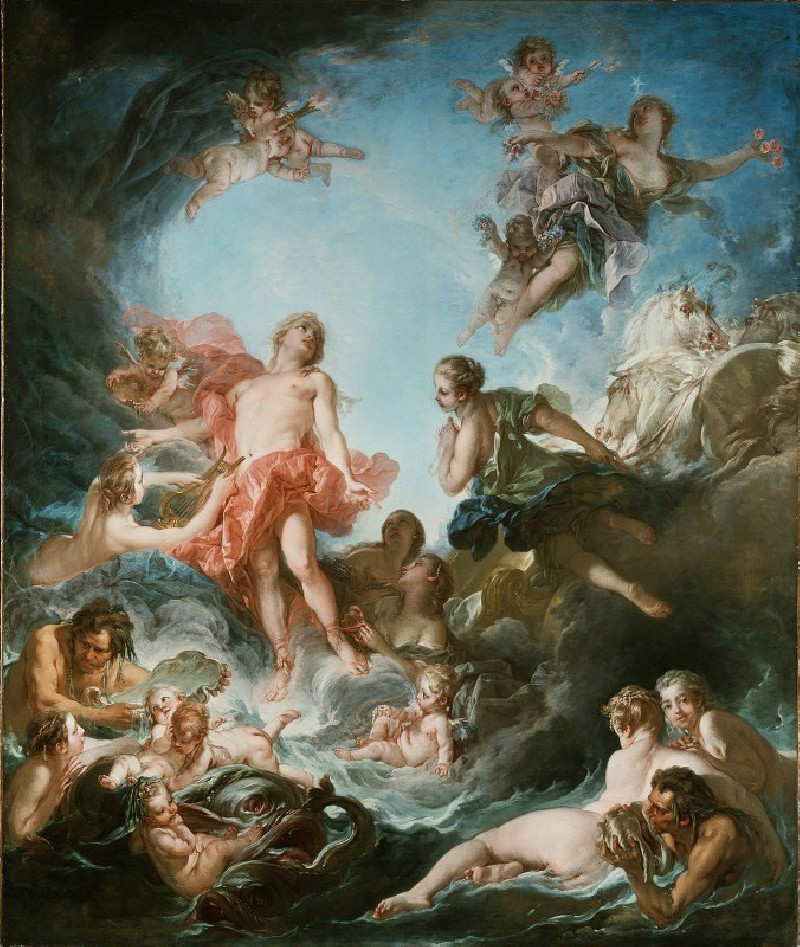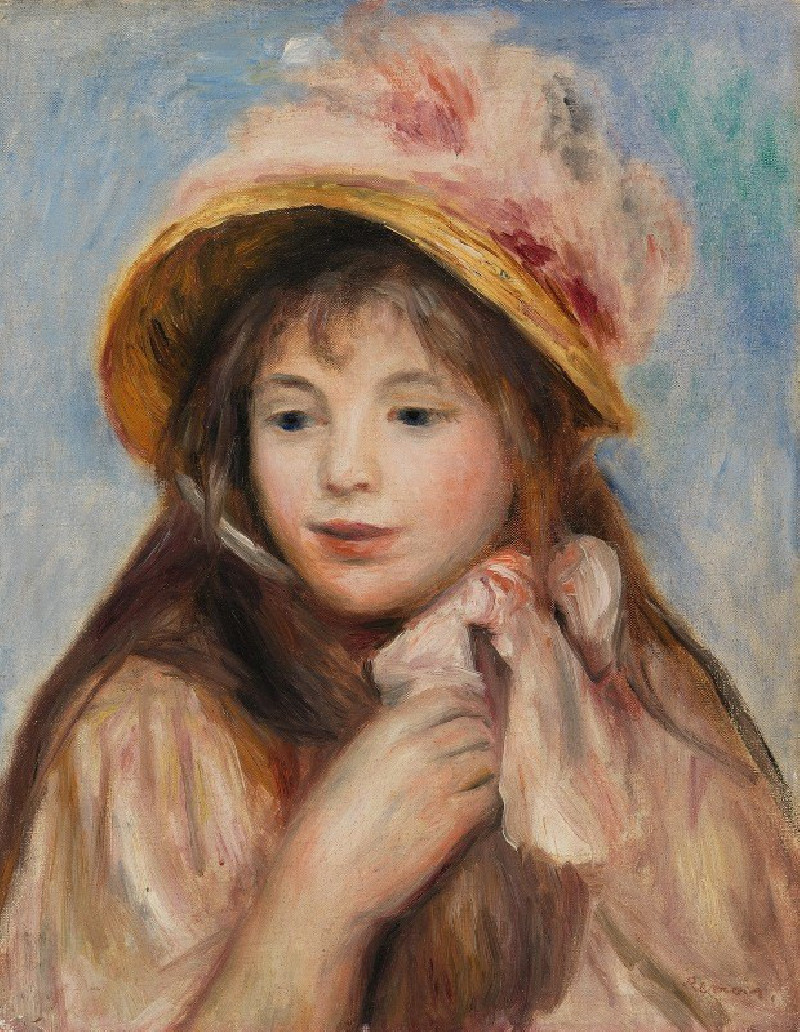Road In Aasgaardstrand (1901)
Technique: Giclée quality print
Recommended by our customers
More about this artwork
"Road in Åsgårdstrand" by Edvard Munch is a vibrant and expressive painting that captures a picturesque scene of a winding road in the Norwegian coastal village of Åsgårdstrand, where Munch spent many summers. The painting is dominated by a dynamic composition that draws the viewer's eye through the landscape.Foregrounding the scene is a large figure of a young girl with a solemn expression, staring directly at the viewer. She wears a white dress and a blue hat, her presence a stark contrast against the more muted tones of the background. The oversized portrayal of the girl suggests a possible emphasis on the emotional or symbolic significance of youth or introspection.The road curves gracefully through the middle of the painting, leading past several individuals and couples in period attire, who walk along or stand beside the path. Their smaller scale as compared to the girl in the foreground creates an intriguing perspective.The landscape is dotted with wooden houses, characterized by their simple, bold colors—yellows and reds—that stand vividly against the green grassy hills. The sky overhead is rendered in soft blue tones, mingling with gentle clouds, suggesting perhaps a late afternoon or a declining day.All elements combined, Munch's painting portrays a sense of quietude alongside underlying emotional depth, reflecting perhaps nostalgia or contemplation evoked by the serene setting. The work is a fine example of Munch’s ability to fuse landscape painting with personal expression, typical of his evocative style.
Delivery
Returns
Edvard Munch (12 December 1863 – 23 January 1944) was a Norwegian painter. His best known work, The Scream (1893), has become one of Western art's most iconic images.
His childhood was overshadowed by illness, bereavement and the dread of inheriting a mental condition that ran in the family. Studying at the Royal School of Art and Design in Kristiania (today's Oslo), Munch began to live a bohemian life under the influence of the nihilist Hans Jæger, who urged him to paint his own emotional and psychological state ('soul painting'); from this emerged his distinctive style.

